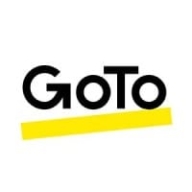


LogMeIn Rescue and Check Point Remote Access VPN are competing products in the realm of remote access technology. LogMeIn Rescue has an advantage in pricing and support, while Check Point Remote Access VPN shows strength in robust features, making it worth the investment based on data.
Features: LogMeIn Rescue offers secure troubleshooting, exceptional remote device access, and a user-friendly interface suited for tech support environments. In contrast, Check Point Remote Access VPN provides strong security protocols, multifactor authentication, and seamless network connectivity tailored for enterprises requiring secure remote access.
Room for Improvement: LogMeIn Rescue could enhance its security features and enterprise-level capabilities. There's also room for further integration options and scalability enhancements. On the other hand, Check Point Remote Access VPN can work on simplifying its setup process, improving its user interface, and offering more competitive pricing options.
Ease of Deployment and Customer Service: LogMeIn Rescue is praised for its intuitive deployment process and responsive customer service, simplifying setup for tech teams. Check Point Remote Access VPN has comprehensive deployment options but can be more complex to set up. Its customer service focuses on providing robust security support.
Pricing and ROI: LogMeIn Rescue attracts users with competitive setup costs and a high return on investment due to its efficient troubleshooting capabilities. In contrast, Check Point Remote Access VPN requires a higher initial investment, justified by its advanced security features, leading to a favorable ROI in larger-scale deployments.
| Product | Market Share (%) |
|---|---|
| Microsoft Intune | 9.6% |
| Check Point Remote Access VPN | 2.3% |
| LogMeIn Rescue | 1.8% |
| Other | 86.3% |



| Company Size | Count |
|---|---|
| Small Business | 116 |
| Midsize Enterprise | 46 |
| Large Enterprise | 152 |
| Company Size | Count |
|---|---|
| Small Business | 40 |
| Midsize Enterprise | 31 |
| Large Enterprise | 33 |
| Company Size | Count |
|---|---|
| Small Business | 9 |
| Midsize Enterprise | 1 |
| Large Enterprise | 2 |
Microsoft Intune provides centralized management of mobile devices and applications, ensuring security, compliance, and productivity through integration with Microsoft services like Microsoft 365 and Azure Active Directory.
Organizations use Intune for managing mobile devices and applications, enhancing security and compliance across platforms. With features like single sign-on, conditional access, and zero-touch deployment via Autopilot, it facilitates efficient operations. Intune's scalability, easy enrollment, and capabilities such as remote wipe support diverse device management, offering robust data protection and efficient operation. Despite its features, improvement areas include reporting, compatibility with non-Microsoft devices, and better support for macOS and Linux devices.
What are the key features of Microsoft Intune?
What benefits should users look for in reviews?
In industries such as finance, healthcare, and education, Microsoft Intune is implemented to ensure secure and compliant device management. Companies leverage its capabilities to deploy security policies and manage both corporate-owned and BYOD environments, facilitating a unified approach to data protection and compliance.
Remote secure access VPN is a solution that provides users with remote access to an organization’s network. The host may have VPN client software loaded or use a web-based client. The solution leverages security features like multi-factor authentication, endpoint scanning, and encryption of all data in motion.
Check Point Remote Access VPN provides individuals with protected and efficient access to a company network from anywhere. This strategy fosters collaboration and connectivity between distributed teams and offices.
Features of Check Point Remote Access VPN
Key features of the secure remote access VPN include:
The system enforces endpoint security with endpoint compliance. It monitors and verifies the security status of each endpoint and reports back to the Security Gateway. The gateway, in turn, checks the compliance level and directs the connectivity to the right resources.
Users can deploy the Remote Access VPN in one of three ways:
Remote Access VPN is centrally managed. The centralized console enables management and enforcement of policies with a single log-in.
The Remote Access VPN has a web portal that users can use to connect securely to corporate applications, such as web-based resources, file-sharing, and email. Administrators can customize the web portal to match the brand identity.
Remote Access VPN offers two choices for remote access:
The authentication features include password management, RADIUS challenge/response, CAPI software, and hardware tokens. P12 certificates, and SecurID.
The system establishes a VPN tunnel on demand. It also re-arranges connections when roaming. The tunnel can automatically tear down when the user is on the corporate LAN.
There are several connection features, such as Hotspot detection, office mode IP, split tunneling, and automatic fallback to HTTPS.
Benefits of Check Point Remote Access VPN
One of the key advantages of Remote Access VPN is that it provides remote workers with a secure way to connect to a corporate network from any device, including their personal devices. The data encryption in transit enables them to securely access the resources they need for their tasks.
It also provides IT support and technicians with a faster way to troubleshoot software issues. In the case of a ticket, IT doesn’t need to go to the server location to fix the problem but can troubleshoot it remotely.
A remote secure access VPN is also an affordable alternative for small and medium-sized businesses, without requiring expensive infrastructure.
Reviews from Real Users
A Global IT Network and Security Service Senior Specialist at a manufacturing company who uses Check Point Remote Access VPN says, "I found the MEP feature the most valuable. This has improved users' latency allowing the users to connect to the nearest Azure Check Point VM."
"Organizations that already use the Check Point NGFW Solution do not require any additional hardware, which makes the implementation straightforward and reduces the time to go live," explains Basil D., Senior Manager at a financial services firm.
Manuel B., a Voice and data infrastructure specialist at a tech services company, says that "The IPSec VPN, Mobile Access, and Identity Awareness are three of the blades with which we have been working with since the pandemic. This has given us great mobility, making our network more dynamic."
LogMeIn Rescue delivers unparalleled remote IT support technology that allows enterprises to better manage mobile remote support and remote desktop support helping users across PC, Mac, iOS, Android support and more. Features include remote computer access, mobile app support, and the exciting Rescue Lens interactive video support feature that allows support technicians to see exactly what the end user can see. LogMeIn Rescue is truly on the cutting edge of the remote technical support industry.
We monitor all Remote Access reviews to prevent fraudulent reviews and keep review quality high. We do not post reviews by company employees or direct competitors. We validate each review for authenticity via cross-reference with LinkedIn, and personal follow-up with the reviewer when necessary.